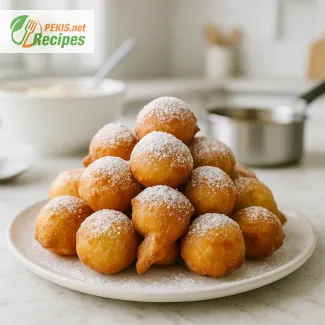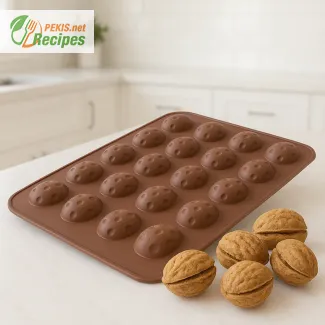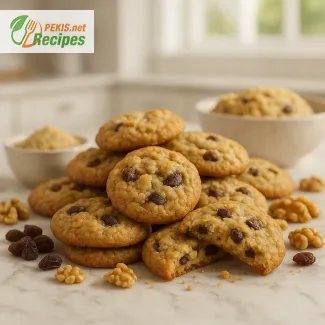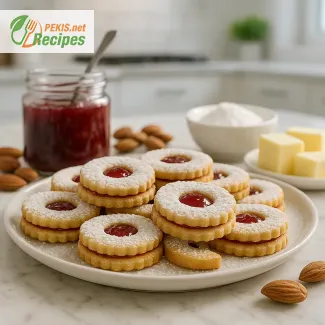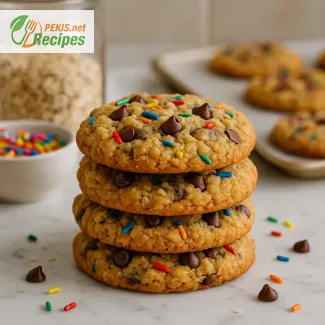
Sweet Start to a New School Year: Bake Together and Make Memories
Fun, easy cookie ideas to celebrate back-to-school season with your kids
As the summer winds down and the first day of school approaches, many families look for ways to transition smoothly back into routine while still savoring the joy of togetherness. One of the most heartwarming ways to do that is by spending time in the kitchen, baking homemade cookies with your kids. These aren’t just any cookies—they’re back-to-school cookies designed to bring excitement to lunchboxes, sweeten after-school moments, and create lasting memories during one of the year’s most emotionally charged transitions.
For kids, the return to school can bring a mix of emotions: anticipation, nervousness, and excitement. Baking with them before or during that transition not only offers a calming activity, but it also allows parents to connect and reassure. Cookie baking becomes more than a culinary task—it’s a tradition that signals comfort, care, and readiness.
From classic chocolate chip cookies with a twist to colorful sprinkle-studded treats, kid-friendly cookie recipes can be tailored to suit your child’s taste, creativity, and school needs. Whether you’re looking for a fun weekend project before school starts or a simple weekday activity to unwind after the first week, the right cookie recipe brings both flavor and emotional comfort to the table.
Why back-to-school cookies matter
Homemade cookies have a special way of evoking feelings of home, warmth, and affection. In the context of returning to school, they serve as gentle reminders that love and support are always present—even when a child steps out into the world. Packing a cookie made together in a lunchbox is like sending a note of encouragement and care hidden in sweet form.
Beyond that, baking with children teaches essential skills in an engaging and non-intimidating way. Measuring flour, cracking eggs, and following instructions build early foundations in math, motor skills, and patience. When a child feels ownership over the snack they helped create, their confidence and sense of pride grow—valuable traits for the new academic year.
Cookies also offer flexibility. They can be baked in batches, frozen for later, or turned into bite-sized snacks perfect for after-school hunger or classroom celebrations. The recipes can be adjusted for allergies, preferences, and nutrition goals without sacrificing flavor or joy.
Choosing the right cookies for the season
When planning your back-to-school baking, look for cookies that are:
- Simple enough for young children to help with
- Quick to bake, allowing for short attention spans
- Fun in texture or shape, such as cut-out cookies, sandwich cookies, or ones decorated with icing or sprinkles
- Easy to store and pack, especially for lunchboxes and school events
Classic options like oatmeal raisin, peanut butter, or chocolate chip cookies are reliable favorites, but don’t hesitate to get creative. Think of apple-cinnamon cookies that echo fall flavors, monster cookies filled with fun candies, or healthy banana oat cookies as a nutritious alternative. The variety ensures that every child—picky eater or adventurous foodie—finds something to love.
Making baking part of your family rhythm
A key benefit of baking cookies with your kids is the ritual it creates. It’s not just about the end product but about the laughs, messes, and hands-on learning that happen along the way. Let your child scoop dough, press shapes, or sprinkle toppings. These actions empower them and help create a sense of responsibility and creativity.
Even for busy households, cookie baking can become a weekly ritual. Set aside an hour on a Sunday evening or Saturday morning to bake and talk. It’s an excellent screen-free activity that offers connection in a time often filled with distractions.
If mornings are chaotic, consider baking cookies ahead of time and storing them in airtight containers for grab-and-go snacks. You can even label them by weekday or use them as motivational treats after homework or chores. The adaptability of cookies makes them an ideal anchor for a family routine that evolves with the school year.
Involving kids of all ages
Different age groups can contribute in age-appropriate ways:
- Toddlers can help mix ingredients with supervision and place cookie dough onto trays
- School-aged kids can read recipes aloud, crack eggs, and shape cookies
- Teens can take the lead on baking, timing, and even recipe experimentation
This shared responsibility turns the kitchen into a space of collaboration rather than just instruction. It shows children that the family unit works best when everyone plays a part—and that baking is a skill for life, not just a seasonal activity.
Cookies as part of the school year narrative
Cookies can also serve as conversation starters. Consider letting your child decorate cookies with shapes, initials, or colors that reflect their feelings about school. They might design a cookie shaped like a pencil, a smiley face for excitement, or even one with a surprised face if they’re nervous. This gentle expression helps children externalize their emotions in a safe, playful setting.
Additionally, these cookies can become gifts for teachers, lunchbox notes, or welcome-back surprises for classmates. When your child shares something they baked, it fosters generosity, social confidence, and appreciation for others.
Incorporating back-to-school cookies into your routine adds a sprinkle of sweetness to an otherwise structured season. It’s a chance to slow down, roll some dough, and strengthen the bonds that help kids walk into their classrooms a little taller and a lot more loved.
- Preheat your oven to 175°C (350°F). Line a baking sheet with parchment paper.
- In a large mixing bowl, cream the softened butter, brown sugar, and white sugar together until light and fluffy using a hand mixer or stand mixer.
- Add the egg and vanilla extract, and beat until well combined.
- In a separate bowl, whisk together the flour, baking soda, and salt.
- Gradually add the dry mixture to the wet mixture, mixing on low speed until fully incorporated.
- Fold in the rolled oats, mini chocolate chips, and rainbow sprinkles using a silicone spatula or wooden spoon.
- Using a tablespoon or small cookie scoop, portion dough into 24 equal balls and place them evenly spaced on the prepared baking sheet.
- Flatten each ball slightly with your fingers or the back of a spoon.
- Bake for 10–12 minutes or until the edges are golden brown but the centers remain soft.
- Let the cookies cool on the baking sheet for 5 minutes before transferring them to a wire rack to cool completely.
Creative Twists and Tips for Better Homemade School Cookies
Enhance the flavor, texture, and nutrition of your back-to-school cookies
While the classic back-to-school cookie recipe is already a comforting and delicious treat, there’s always room for improvement and personalization. Whether you're baking for picky eaters, health-conscious parents, or simply want to elevate the homemade experience, knowing how to adapt the recipe can make all the difference. This guide offers practical advice on how to enrich the flavor, adjust the texture, boost nutritional value, and ensure success every time.
Simple ingredient swaps that upgrade the recipe
The original recipe includes oats, mini chocolate chips, and colorful sprinkles—perfect for kid appeal. However, with a few smart swaps, you can tailor the cookies to suit specific dietary needs or preferences.
Add nut butters for richness
Incorporating peanut butter or almond butter (replace 50 g of butter) adds a creamy depth and nuttiness that enhances both taste and texture. It also increases the protein content, making the cookies more satisfying.
Boost the fiber with whole wheat flour
Swapping 50% of the all-purpose flour with whole wheat flour gives a subtle nutty flavor and improves the cookie's fiber content, which can aid digestion and provide longer-lasting energy for school days.
Sneak in mashed fruit
Replacing part of the sugar or butter with mashed banana or unsweetened applesauce can naturally sweeten the cookies while reducing saturated fat. These fruits also introduce moisture, so the cookies stay soft longer.
Try dried fruits and seeds
Mixing in dried cranberries, raisins, or sunflower seeds adds a chewy contrast and enhances nutrient diversity. These ingredients can replace half the chocolate chips or be added in small quantities for texture and color.
Use dark chocolate instead of milk
Replacing regular mini chocolate chips with dark chocolate chunks brings a more intense flavor and higher antioxidant content, appealing to more mature palates while staying kid-friendly.
Why homemade is better than store-bought
Baking cookies at home offers control over every ingredient. This is especially valuable when it comes to reducing preservatives, artificial flavors, and excessive sugars often found in store-bought snacks.
Homemade cookies also allow families to manage food allergies or intolerances more safely by using gluten-free oats, dairy alternatives, or egg substitutes. More importantly, homemade cookies foster creativity and connection, transforming snack time into a shared experience rooted in care and attention.
Common mistakes to avoid
Even a simple cookie recipe can go awry without the right techniques. Avoid these common pitfalls to ensure your cookies are chewy, soft, and flavorful every time:
Overmixing the dough
Once the flour is added, mixing too much can overdevelop the gluten, resulting in tough cookies. Always mix dry ingredients just until combined.
Not measuring flour correctly
Using too much flour leads to dry, crumbly cookies. To avoid this, spoon the flour into your measuring cup and level it with a knife—never scoop directly from the bag.
Skipping the chill time (optional but helpful)
If time allows, chilling the dough for 30 minutes before baking helps prevent spreading and enhances the flavor. It allows the oats and flour to fully hydrate and the butter to firm up.
Baking too long
Cookies continue baking on the sheet after removal from the oven. Take them out when edges are golden but centers still look slightly underbaked. This ensures a soft interior once cooled.
Healthier adjustments without sacrificing taste
If you're looking to reduce sugar, you can safely cut the amount of both brown and white sugar by 20% without significantly affecting taste or texture.
For a dairy-free version, use plant-based butter alternatives that are made for baking, and ensure chocolate chips and sprinkles are free from milk ingredients.
To increase protein, add a spoonful of chia seeds, ground flaxseed, or a small amount of unflavored protein powder into the dry mix. Be sure to add a touch more moisture if using powders.
For added micronutrients, incorporate grated carrot or zucchini. They won’t overpower the flavor, but they bring moisture and subtle sweetness, along with vitamins A and C.
Creative presentation and serving ideas
Use cookie cutters to create themed shapes like stars, apples, or hearts—especially appealing for younger kids.
Create sandwich cookies by spreading a small layer of natural nut butter or a yogurt-based spread between two cookies.
Decorate with initials or school symbols using a small piping bag and melted chocolate or natural icing for a personalized touch.
Cookies can also be packaged in individual wax paper wraps and tied with a ribbon for easy lunchbox packing or to be given as welcome gifts for teachers and classmates.
By customizing the ingredients and being mindful of technique, these cookies can be more than just a snack—they become a memory, a tradition, and a symbol of comfort as the school year begins.
Allergens present in the recipe:
- Gluten: from all-purpose flour and oats
- Eggs
- Dairy: from butter
- Soy and traces of nuts: may be present in chocolate chips or sprinkles depending on brand
Suggestions to replace allergens and make the recipe gluten-free or allergy-friendly:
- Replace all-purpose flour with a 1:1 gluten-free baking flour blend that includes xanthan gum
- Use certified gluten-free oats
- Substitute egg with 60 ml (¼ cup) unsweetened applesauce or a chia egg (1 tbsp chia seeds + 3 tbsp water)
- Use dairy-free butter alternative (like coconut oil or vegan margarine)
- Choose allergy-friendly chocolate chips and sprinkles that are labeled nut-free and soy-free
Vitamins and minerals per serving (approximate):
- Vitamin B1 (Thiamine): 0.05 mg – supports nerve function
- Vitamin B2 (Riboflavin): 0.07 mg – helps with energy production
- Vitamin B3 (Niacin): 0.5 mg – aids in metabolism
- Calcium: 10 mg – essential for bone development
- Iron: 0.7 mg – supports red blood cell formation
- Magnesium: 10 mg – supports muscle and nerve function
- Phosphorus: 30 mg – contributes to strong bones and teeth
- Zinc: 0.3 mg – boosts immune function
Antioxidants per serving (approximate):
- Vitamin E: 0.3 mg – protects cells from oxidative stress
- Phenolic compounds (from oats and chocolate): 30–50 mg – support heart and cell health
- Flavonoids (from chocolate): 25 mg – anti-inflammatory, supports brain health
- Beta-carotene (from sprinkles if natural coloring): trace – supports vision and skin health
